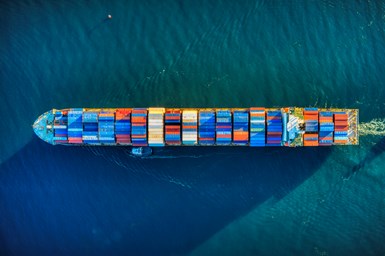U.S. ports congestion likely to extend into 2022
U.S. manufacturers, retailers and consumers have felt the impacts of supply chain issues throughout the COVID-19 pandemic amid congestion at ports, and it appears conditions won’t considerably improve any time soon, as posted in Thomas Insights on Sept. 21.
Edited by Margo Ellis

U.S. manufacturers, retailers and consumers have felt the impacts of various supply chain issues throughout the COVID-19 pandemic amid congestion at ports, and it appears conditions won’t considerably improve any time soon, as posted in Thomas Insights on Sept. 21.
Data from the Marine Exchange of Southern California showed that 40 or more ships have been anchored off the coast awaiting entry at the ports of Los Angeles and Long Beach since mid-August. Those ports combine to serve as the largest U.S. gateway for trade, accounting for about one-third of U.S. seaborne imports.
On Aug. 27, that figure reached 44 ships, topping the record of 40 set in February of this year. Other single-day records set that day included 71 total ships at anchor and 72 container ships in port.
And it’s not just the amount of ships waiting to unload their cargo that’s the issue — it’s how long that wait is. Sept. 7 data from the Port of Los Angeles showed a 30-day average anchorage wait time of 8.1 days, up from 7.6 days in late August and 6.2 days in mid-August.
Port of Long Beach Executive Director Mario Cordero told the Wall Street Journal in early September, “I don’t see substantial mitigation with regard to the congestion that the major container ports are experiencing. Many people believe it’s going to continue through the summer of 2022.”
On the East Coast, at the Port of Savannah, Georgia, Ports Authority Executive Director Griff Lynch told the WSJ, “We think at least midway through 2022 or the entire 2022 could be very strong.”
One of the biggest factors causing the congestion is a shortage of truck drivers and warehouse workers, which leads to slower supply chains as distributors are unable to move products at typical market-rate speeds. With so many containers sitting idle outside of port entryways, other logistics operators are experiencing a shortage of shipping containers needed to transport additional products, which, in turn, has sent container prices soaring.
RELATED CONTENT
-
MSS Publishes Revised and New Industry Standards
The Manufacturers Standardization Society (MSS) of the Valve and Fittings Industry is excited to announce publication of the new Standard Practice SP-158-2021, Supplemental High-Pressure Gas Test Procedures for Valves.
-
Which Gate Valve is Best for Today's Waterworks Systems?
A historical perspective may provide the answer.
-
New Technologies Solve Severe Cavitation Problems
An advanced anti-cavitation control valve design enabled by 3D metal printing solved a power plant’s severe cavitation problem and dramatically improved its bottom line.











 Unloading large gate valve.jpg;maxWidth=214)